- Open Source CEO by Bill Kerr
- Posts
- Strategism: The AI Revenue Per Employee War
Strategism: The AI Revenue Per Employee War
How companies are getting leaner, and how you can too. 🏜️
👋 Howdy to the 1,853 new legends who joined this week! You are now part of a 203,093 strong tribe outperforming the competition together.
LATEST POSTS 📚
If you’re new, not yet a subscriber, or just plain missed it, here are some of our recent editions.
🏜️ Unfiltered: The Road To Figure’s IPO. A behind the scenes with multi-IPO founder, Mike Cagney.
📝 Strategism: Mastering The Founder Letter. Standing out made easy. How founder letters are shaping company narratives today.
🏴☠️ THE DREAD PIRATE ROBERTS. The wild story of the founder of the Silk Road, Ross Ulbricht.

PARTNERS 💫
Stop overpaying on taxes in 2025.
Let’s be real: Your biggest expense every year isn’t your team or your tools.
It’s your taxes, and most high earners pay more than they should.
Written by Ankur Nagpal (who sold his last company for $250M), The No BS Guide to Paying Less in Taxes breaks down the exact strategies wealthy business owners actually use:
Smarter entities
Deduction stacking
Retirement tax hacks
And moves that 17+ more tactics to cut taxes fast
With December 31st fast approaching, now’s the time to act.
Interested in sponsoring these emails? See our partnership options here.

HOUSEKEEPING 📨
I was robbed while in São Paulo this week. It was a very frustrating experience. Mainly due to the attack, I was under from a fraud perspective. They went after all my banks—of which I had a surprising amount on my phone—identification, and crypto. When all was said and done, it was only ~$10k of crypto in a Coinbase account that was lost.

Considering ten thousand dollars is not going to bankrupt me, I did my best not to let it upset me too much. After huge financial pressure (mortgages, credit cards, failed startups) in my early life, I made the conscious decision a year or two ago to never stress about money again. Sure, if I lost $50k, it would have pissed me off, but for most things money-wise (a missed flight, a broken phone, canceling for a better Airbnb), I don’t let it upset me. Even with this robbery, I kinda thought, ‘Well, he probably needed it more than me anyway.’ Money is a tool to improve my life, not make it worse. Anyway, I hope you enjoy today’s writing.

STRATEGISM 🔮
Strategism: The Efficiency Imperative
Although the chart below is likely attributable to the end of the free money, ZIRP era, it has been used as a bellwether for AI. If you are an AI-pessimist, you may see job destruction and a future where we are all walking a slow trudge to the unemployment line. If you are an AI-optimist, you see technology. The future is here, and we, as a society, can do more with less. Fire, the wheel, agriculture. All technologies that were key to a better future and the reason we are no longer living a subsistence lifestyle.
Although the future is far from clear, this opportunity for us to supercharge global growth through AI is real. What I also see is competition. I see that the market—which can be seen as an illustrative forward look into private markets—is becoming increasingly competitive. We need to keep pace.

In today’s piece, my goal is to illustrate the present opportunity available to you. What is happening, who are the leaders of the pack, and most importantly, how in the hell are they doing so much with so little? Lean teams, AI leverage, and retention-first growth are here. Time to adapt or die.
Efficiency over history
For most of human history, if you wanted to move something 100 miles, you used your feet. A few miles per hour, requiring over 30 hours of pure human effort. Then we domesticated horses, allowing us to travel that same distance in a day. Buggies let us carry more. Cars made it comfortable. And fast. Trains moved hundreds of humans at once. Jets collapsed continents into hours. These changes in the technology of transportation moved us forward, with each leap representing a major step change in human possibility.

Once we settled on cars as our main form of transport, we made sure to iterate consistently. This time, not on the technology of the car (although that also progressed), but rather the construction of the car. Henry Ford, famous for the production line and the Model T, and his River Rouge plant, in its 1930s heyday, employed over 100,000 workers to produce 1.5 million cars annually.
Following Ford was Toyota patriarch, Sakichi Toyoda, known as ‘Japan's Thomas Edison.’ His family, along with Taiichi Ohno, would eventually go on to develop the ‘just-in-time’ lean manufacturing principles, which were developed to produce only what is needed, as needed. The insights came when Ohno, during a trip to the United States, saw how supermarkets only stocked what customers bought, restocking based on consumption. ‘What if we don't waste anything?’ was the question Toyota would ask itself.
The final boss of auto manufacturing is, of course, Tesla, led by Elon Musk. Tesla’s Fremont plant produces roughly 550,000 vehicles with around 10,000 workers—almost four times more than Ford’s peak—thanks to the superior technology a century later. But it's not just automation. It's software-defined manufacturing. Over-the-air updates mean you're continuously improving products already in customers’ hands. Vertical integration meant no vendor bloat. Real-time data from millions of vehicles feeds back into production.
This is but one example. A similar illustration can be seen in farming, where the average farmer in the 1800s produced enough to feed 4-5 people, compared to today, when the same farmer can produce enough food to supply more than 150 hungry mouths. Or publishing, where, in the 1440s, the Gutenberg Press could produce up to 3,600 pages per workday. Compare that to me, now, sitting in a cafe in Brazil, about to ship this 3,000-word piece out to two hundred thousand living souls at the speed of the Internet, at zero marginal cost. The prosperity of the human race is nothing more than a big, fat exercise in recurrently finding ways to do more with less.
Why today is different
I’m not sure about you, but today seemed to happen really fast. What was impressive within a lean startup (shout out Eric Ries) even as recently as five years ago, is not at all impressive today. Take Gamma, a company ranked at #14 on the Lean AI Leaderboard, which recently just surpassed $100M in annual recurring revenue, with ~50 employees.
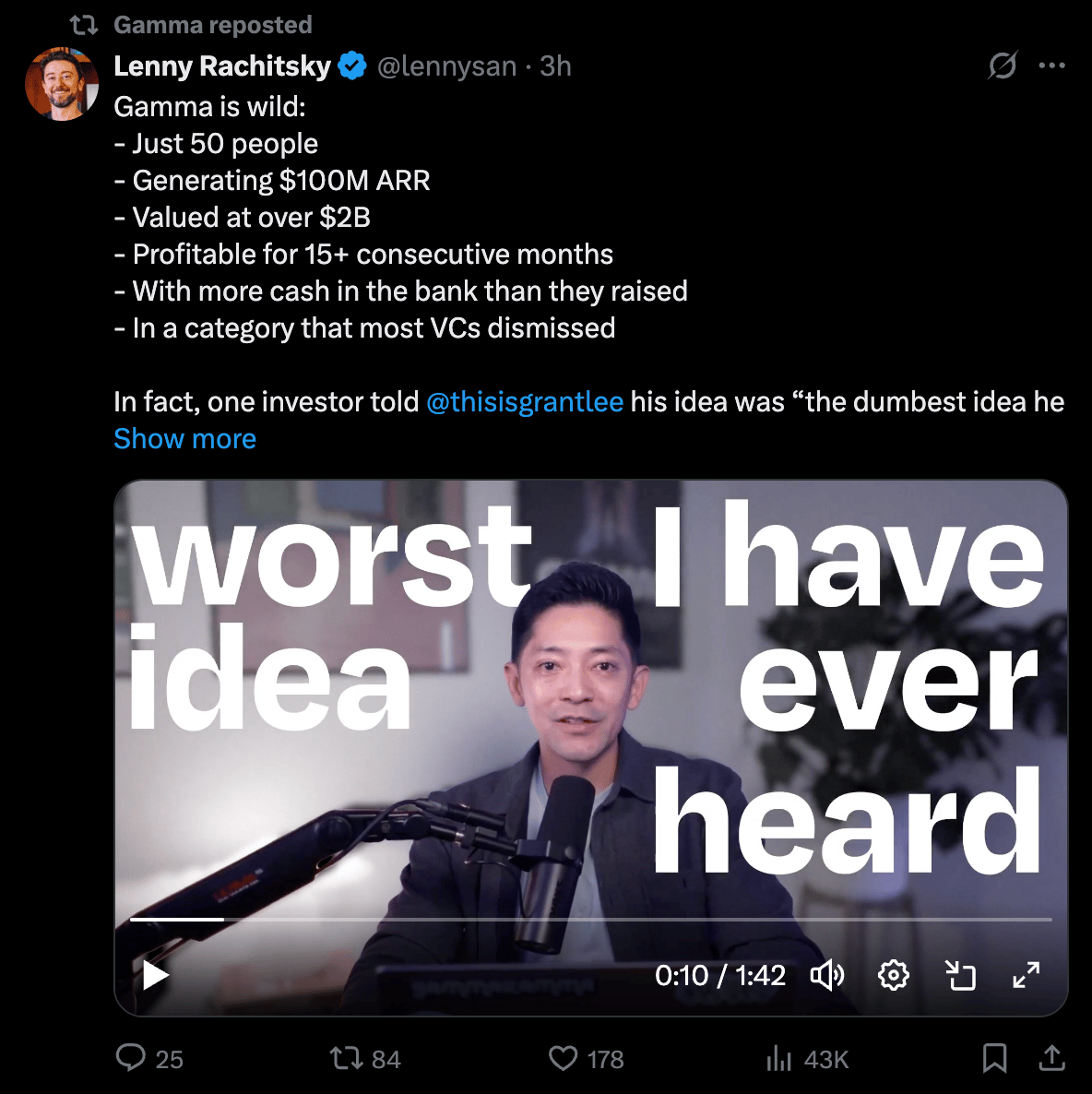
Source: Lenny’s Twitter.
*Note: I actually had placed this tweet from only two months ago in this section when Gamma was still claiming to be at $50M ARR. I also highly recommend this 1,100-word tweet where Grant breaks down what got them to $100M ARR.
I am old enough to remember the years from 2020 to 2023, when it was literally PR-worthy to talk about not your revenue or efficiency, but the cadence at which you were onboarding new hires. I recall an interview with Job, the co-founder of Remote, where he was asked about his revenue and replied (paraphrasing here), ‘We’d rather not talk about revenue, but a great way to look at our growth is our headcount, which just passed 2,000.’ I remember thinking to myself, ‘What a strange answer.’
Truth be told, I respect Job a great deal, and he and the team at Remote have built a remarkable company. This is just a snapshot of what was common at the time.

Although it’s not just the nimble earlier-stage firms that are starting AI-native and staying lean. Big tech is in on the trend as well, announcing record earnings quarter after quarter, while also staying remarkably lean. Meta, for example, boasts a headcount of 78,000 in 2025, still down from 86,000 during their peak in 2022. All while revenues and free cash flow have grown by 62% and 180% respectively.
 Source: Derek Thompson. | 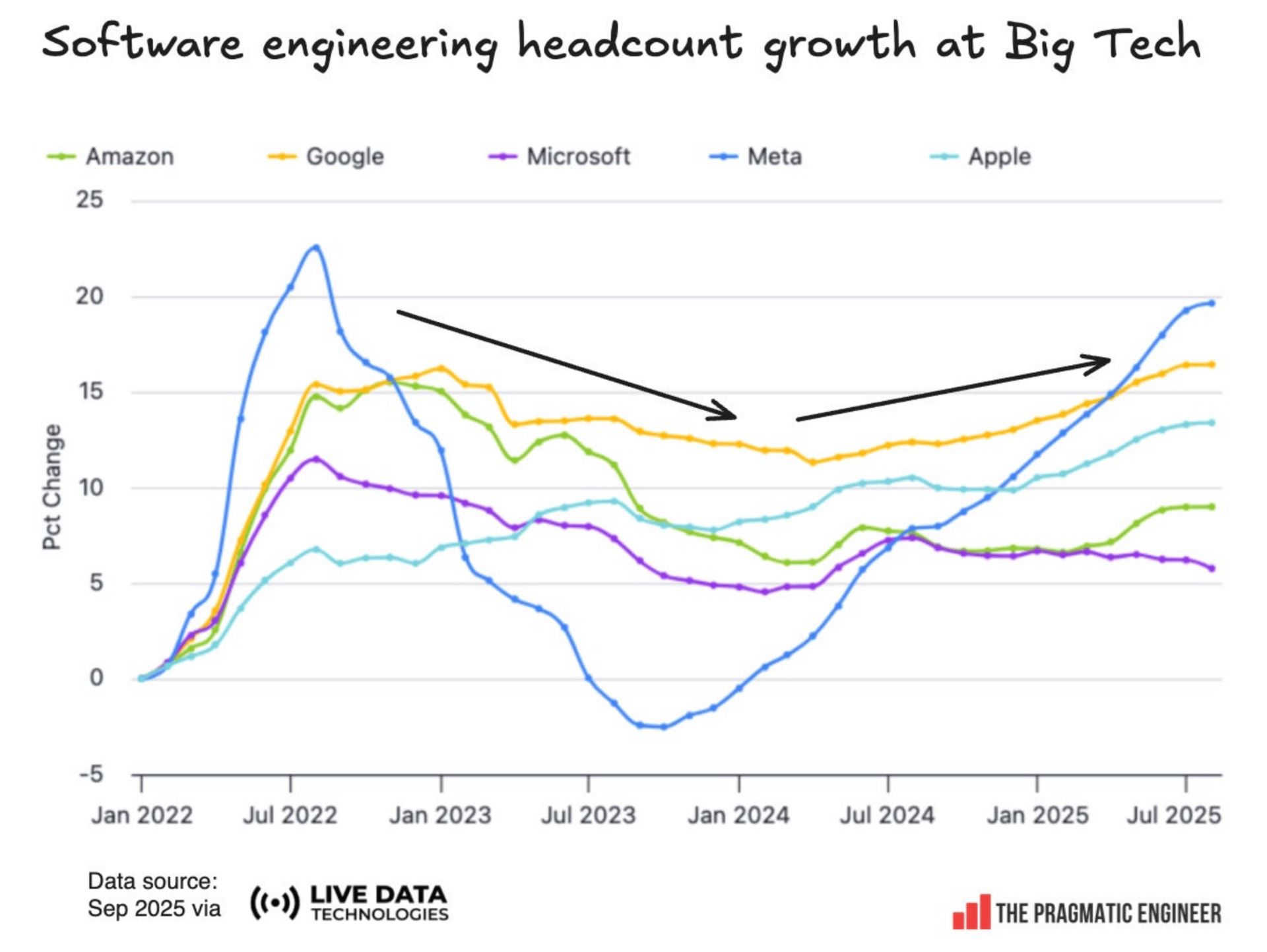 Source: Pragmatic Engineer. |
All this leads me to one solitary conclusion: If you aren’t getting lean, you aren’t going to make it. In this next section, we’ll explore what companies, large and small, are doing to compete in the War of Revenue per Employee.


The Revenue per Employee Arms Race
There are several levers that companies are pulling to ensure they stay competitive today and remain within striking distance of the coveted Sandhill Road Anti-Bloat Medal of Excellence. Let me break down how I’m seeing things in six simple steps.
Step #1: Hire fewer humans
The first, and most obvious, throughline happening across the tech ecosystem is slower hiring. In 2022, it was a literal arms race to find engineering—and GTM, ops, data, and design—talent to move your company forward. This was spurred on by the zero-interest-rate world we were living in, as well as the 100x revenue multiples being handed out by VCs across the globe.

For a brief period in 2022, companies were paying exorbitant amounts of money for talent. Interestingly, the market is incredibly hot again, with many calling an ‘AI bubble,’ but the 2025 Bubble Mania seems to be firing on all cylinders right alongside a counterintuitive push to get leaner. Take recent guest ours, Benjamin Döpfner at Vesto, who is at Series A if you go off logos and revenue, all while his official org chart on LinkedIn looks like this.
While hiring slower overall is beneficial, there are also other mechanisms you can employ when hiring that will take you from zero to hero in terms of efficiency.
Step #2: Hire ‘better’ where you can
Hiring slowly also enables something else that was missing for many years through the early years of the 2020s: thoughtfulness. Bringing on fewer people, at a more sustained cadence, means you can be picky. It’s a hiring manager's market. When in 2022 you were competing against big tech and venture-backed scaleups alike, today you can usually find who you want, when you want them. One powerful strategy for times like these is to pivot your hiring to be predominantly referral-only.

One strategy we’ve used in the past at mt startup, Athyna, is to ask for the three most talented people our team has ever worked with upon joining. Should you have a strong culture and employer brand, these pre-vetted, near-guaranteed rockstar talent will often be very eager to come and join you. And in doing this, you significantly limit your hiring mistakes.
Step 3: Augment humans with AI agents
Alongside your need to hire only the best operators, you will also need to find yourself a handful of the most sought-after professionals in tech today: AI automation engineers. These engineers are those who will lead your agentic strategy from a macro level. They will be responsible for the company-wide workflows and your agentic infrastructure.
As much as we wish it were the case, it’s never going to be the case that 100% of your organization becomes AI-literate and capable of building their own agentic workflow, so a way forward here is an internal AI council—one from each department who can speak on behalf of their needs—mixed with a pod of automation engineers. In an ideal world, at the very least, your AI council should be able to get into the trenches and build some reasonable workflows. Consider a three-layered approach to complexity.
Role | Complexity | Tools | What They Build |
|---|---|---|---|
AI automation engineers | Advanced workflows, custom code | Make.com, n8n, Python, APIs, Langchain | Company-wide agentic systems, custom integrations, complex multi-step AI workflows |
Internal AI council | Mid-weight workflows | Zapier (advanced), Make.com, Relay, Airtable | Department automations, cross-tool integrations, AI-assisted reporting |
Regular employees | Basic automations | ChatGPT, Zapier templates, pre-built tools | Personal productivity, simple task routing, AI writing assistance |
🔥 Looking for AI automation engineers? Hire with Athyna and receive a $5,000 hiring credit for any AI/ML hires.
Step #4: Make sure new hires are AI native
When the CEO of a billion-dollar company says he'll hire you into literally any position based on one skill set, pay attention. A significant shift is underway in the job market. Recently, Wade Foster, CEO of Zapier, publicly announced he'd hire professionals with this specific expertise into any role at his company. Not just engineering. But any role.
If you are not in the same headspace as Wade, you need to drop what you are doing, extend your arm out lengthwise, and then proceed to slam your palm into your own face at a relative exertion level of at least 8/10. All new hires in your organization should be fluent in AI. How do you rate someone on their AI fluency, though? Well, Zapier has you covered with the table below.
Step 5: Add a spend layer for the newest AI tooling
Most companies have weeks-long approval processes for AI tools. Meanwhile, employees are already using AI from personal ChatGPT accounts, uploading proprietary data to who-knows-where, building critical workflows on tools IT doesn't know exist. You have two choices: control the chaos or pretend it doesn't exist.
Take Duolingo, for example. The little green language bird hands every employee $300 annually to experiment with AI tools. No approval needed. Eighty percent will be garbage, but the twenty percent that sticks pays for itself a hundred times over.

Source: Lenny’s Newsletter.
Managers at Intercom are directed to allocate dedicated weekly hours for their teams to upskill in AI. Actual blocked calendar time where experimenting is the job. Shopify gives teams access to Claude, Perplexity, Gemini, Cursor, Copilot, and Claude Code. They built an internal prompt library where employees share winning prompts and agents.
The pattern: treat AI adoption like a product launch, not procurement. Give budget, remove friction, create space. Otherwise, your best people build critical logic on tools you don't control, can't audit, and will break when someone's credit card expires.
Step 6: And hiring fractionally, contractually, globally
My final step here is to consider hiring in ways that minimize fixed headcount and bloated salaries. The ways people are doing this in 2025 are similar to the ways they have always done them.
First, look at fractional hires. Do you need this skillset in your organization for a full 40 hours? If the answer is no, it might be worth examining whether you can hire fractionally (or an advisor). |  |
The next option is contractors. Could this be something you call upon only as an ‘as required’ basis? If so, hire an agency, bring in a freelancer, do whatever you need to do, but only when you need to do it. And the final option is to hire globally (with a $5,000 discount). This typically means similar levels of talent, but with a reduced strain on your resources.
By slowing down and thinking more carefully about who to hire, when to hire them, and whether you really need to have someone full-time, you can eliminate a significant portion of your recruitment overhead.
Combine this with the build-out of an AI-first, agentic strategy inside your HQ, and you will be light-years ahead of where most are today. Putting you in a great position to dominate the next decade in whatever industry it is you operate.
How are we doing at Athyna
If you think I wrote this piece using the best insights of ChatGPT and Claude, you’d only be partly right (efficient right?). I wrote a lot of this piece from firsthand experience with Athyna, my startup. We have followed every step—at least partway—that I outlined, and our revenue per employee has exploded over the last 18 months since we began tracking it.

We have the beginnings of our AI team, with our first AI workflow engineer and a fleshed-out AI council representing the voices of each department. Just this week, we completed our first-ever AI Week, dedicating 20 hours to teaching each other, strategizing how to make the most of these efficiency gains, and enjoying watch parties of the best AI tutorial content on the internet.
We know people across all industries are somewhere between a little spooked and outright terrified of AI, so we wanted to ensure our team became AI-literate. It will be great for the company, as we’ll be more profitable and enjoy faster growth, but it will also prepare our team to crush the rest of their careers in an AI-centric world.
Future
A few months ago, we interviewed Google-excited AI agent founder, Jacob Bank, who recently had the most viral LinkedIn post I think I’ve ever seen. He posted his marketing team for his startup, Relay.app. The team: 40 AI agents.
(If you are interested in watching Jacob do a full video walkthrough, you can find that here.)

Source: Jacob Bank (Relay.app).
I have built a handful of agents myself. I find that they are still in the sometimes useful, often frustrating basket. But this is the worst AI will ever be. If progress continues at Will Smith eating spaghetti speed—which it will—we will be dating our AI coworkers before you can say artificially generated intimacy.
Should we survive the coming AI apocalypse, the future will be a blend of new hyper-effective, always-on digital teammates, with tried-and-true boots on the ground, red blood coursing through their veins, humans. What a time to be alive.
Extra reading
Inside the SaaS efficiency gap - July, 2025
Is This the New ‘Scariest Chart in the World’? - October, 2025
Revenue per Employee: Analyzing the top and bottom players - October, 2025
And that’s it! Hope you enjoyed our deep dive into the world of capital efficiency. Now go, be profitable, be lean.

BRAIN FOOD 🧠

TOOLS WE RECOMMEND 🛠️
Every week, we highlight tools we like and those we actually use inside our business and give them an honest review. Today, we are highlighting Superpower*—a tool used by founders, leaders, athletes and more to optimise their health using AI.
See the full set of tools we use inside of Athyna & Open Source CEO here.

HOW I CAN HELP 🥳
P.S. Want to work together?
Hiring global talent: If you’re hiring tech, business or ops talent and want to do it 80% less, check out my startup, Athyna. 🌏
See my tech stack: Find our suite of tools & resources for both this newsletter and Athyna here. 🧰
Reach an audience of tech leaders: Advertise with us if you want to get in front of founders, investors and leaders in tech. 👀
 |
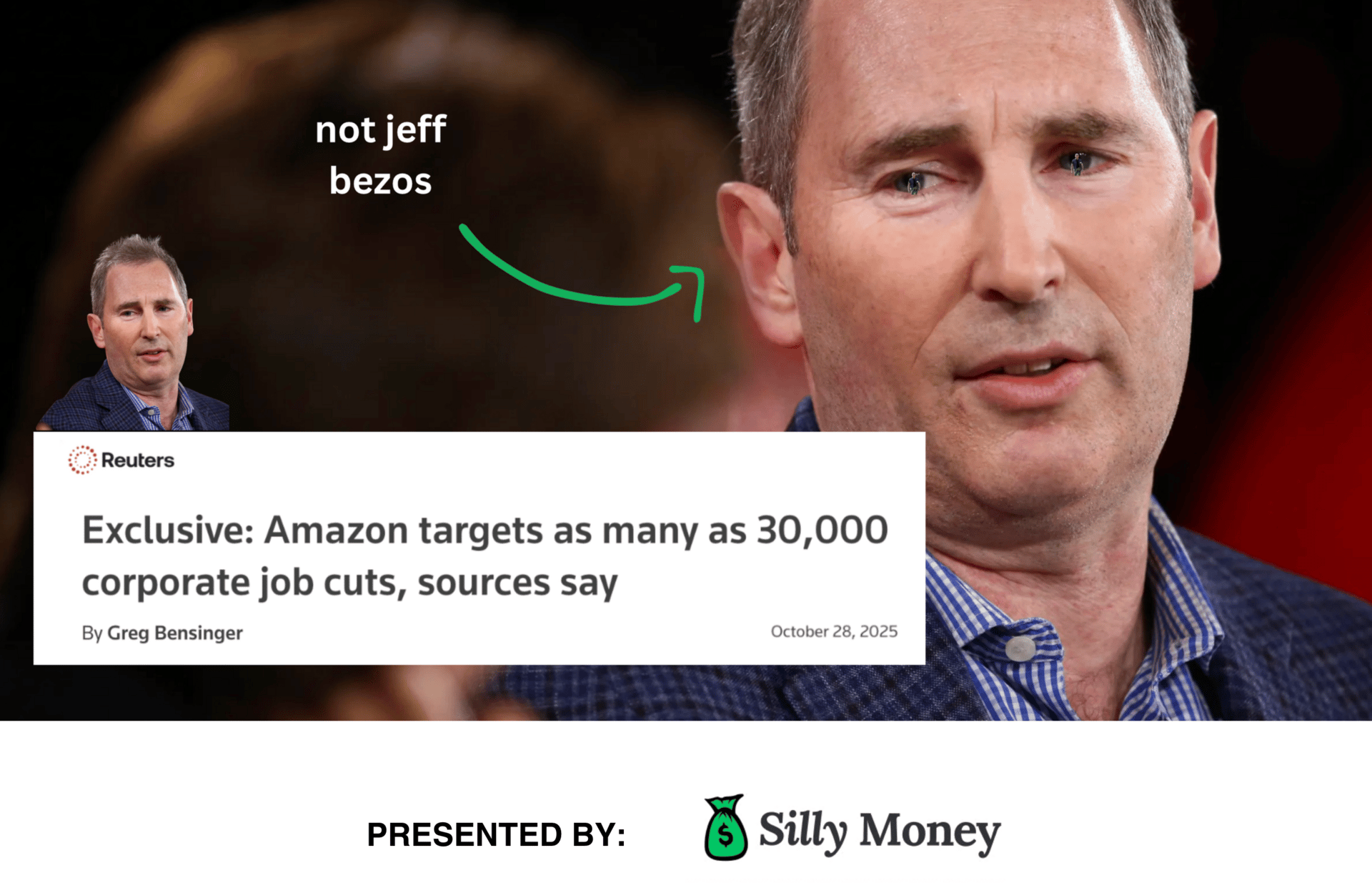

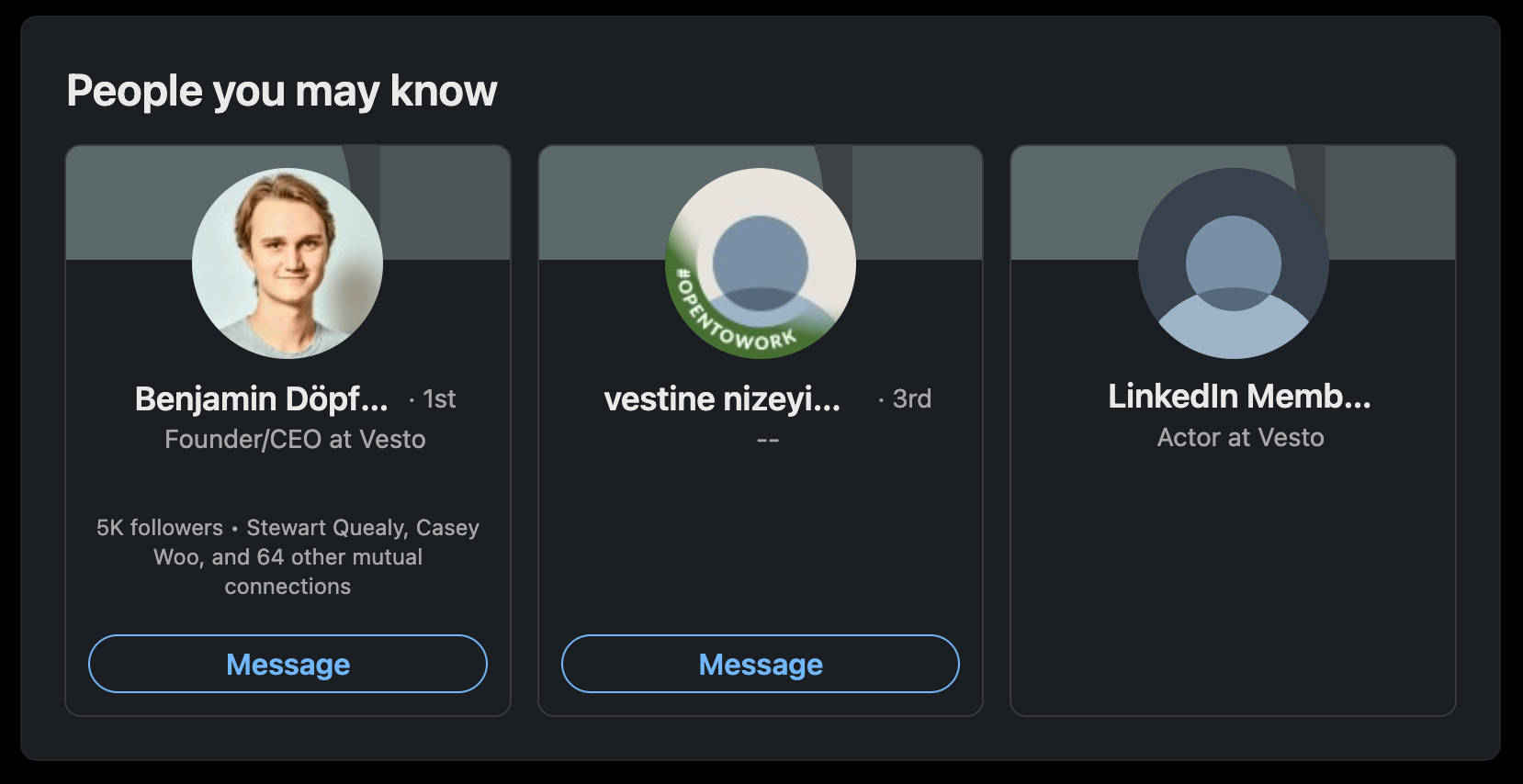




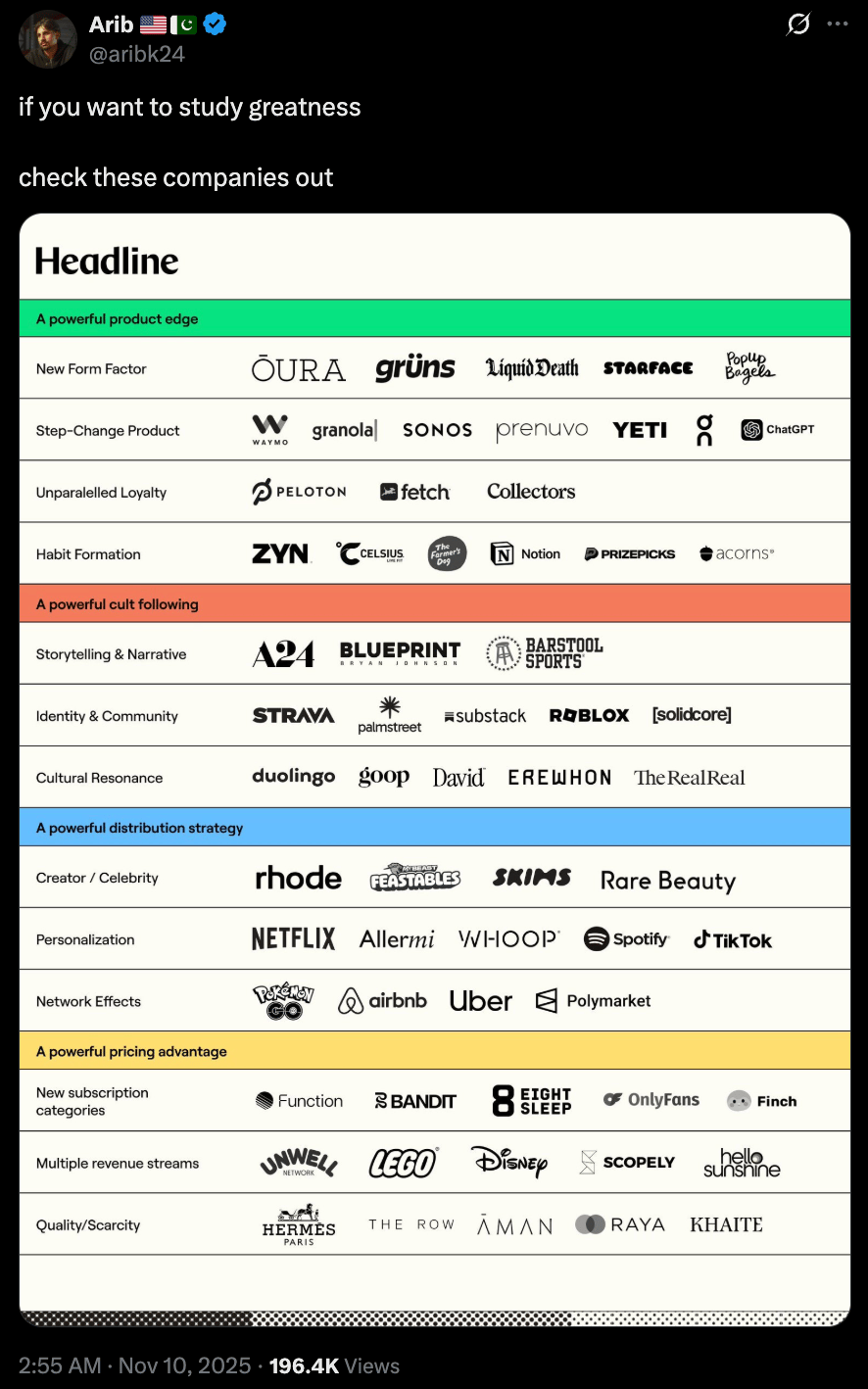
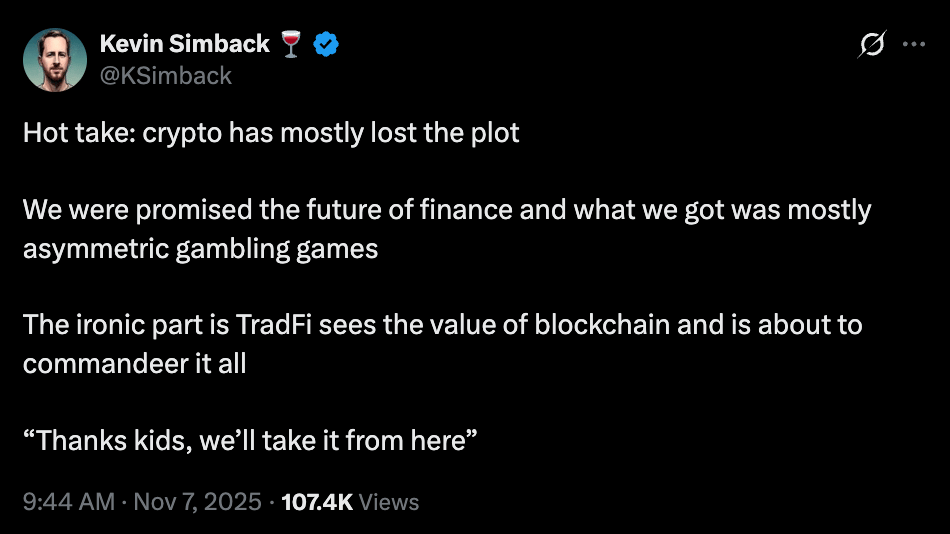
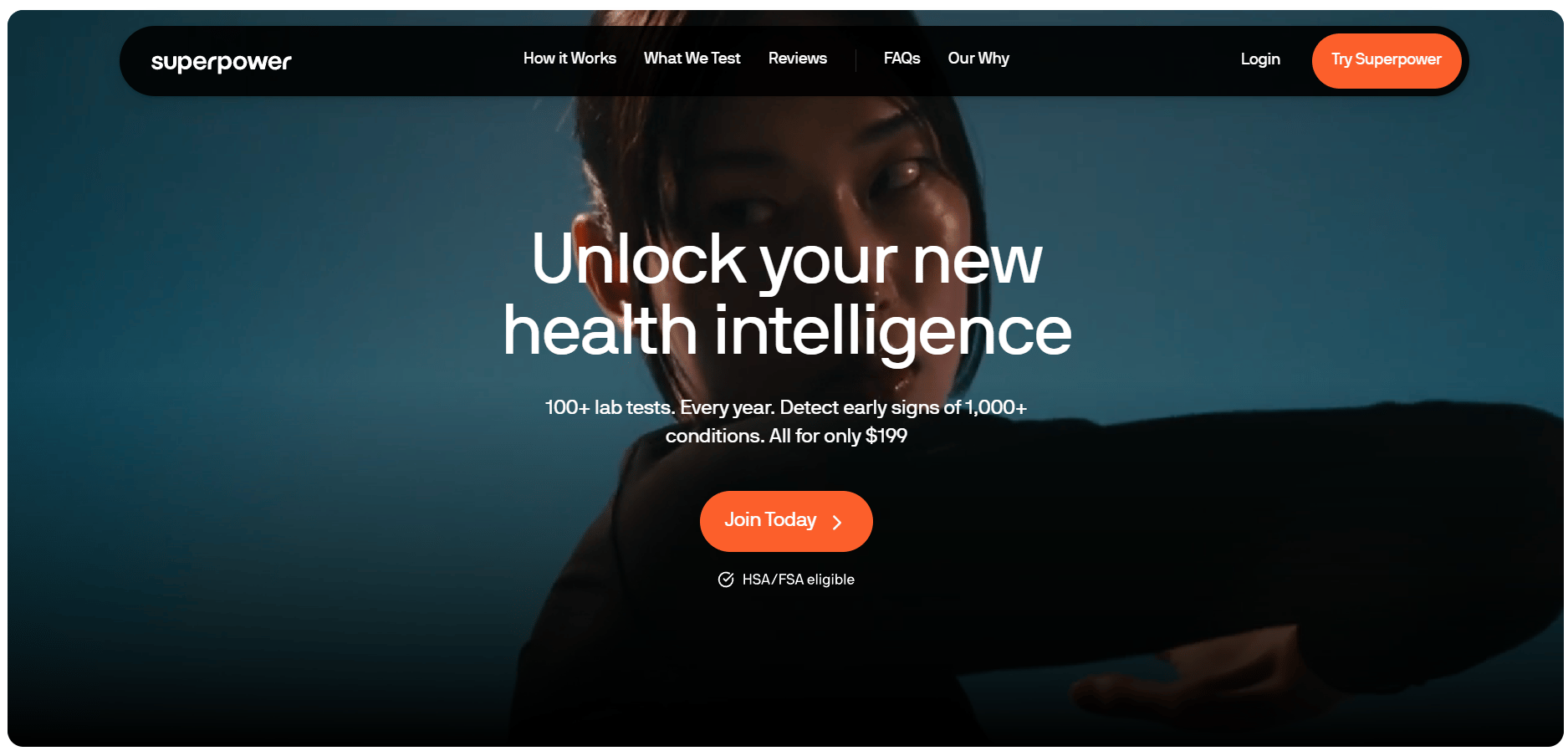
Reply